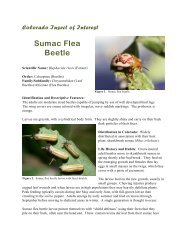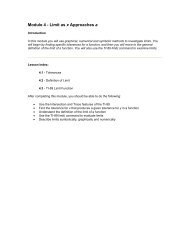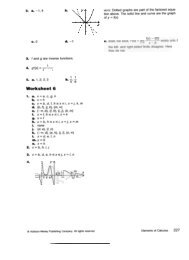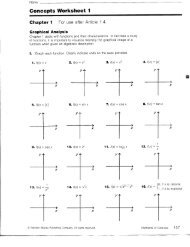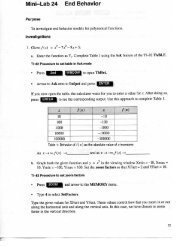The van Hiele Model of the Development of Geometric Thought
The van Hiele Model of the Development of Geometric Thought
The van Hiele Model of the Development of Geometric Thought
Create successful ePaper yourself
Turn your PDF publications into a flip-book with our unique Google optimized e-Paper software.
LEARNING AND TEACHING CiEOMETRY, K-12<br />
deduction. Few students are exposed to, or reach, <strong>the</strong> latter level. A synopsis<br />
<strong>of</strong> <strong>the</strong> levels is presented below.<br />
<strong>The</strong> Plodel<br />
Level O1 (Basic Lad): Visualization<br />
At this initial stage, students are aware <strong>of</strong> space only as something that<br />
exists around <strong>the</strong>m. <strong>Geometric</strong> concepts are viewed as total entities ra<strong>the</strong>r<br />
than as having components or attributes. <strong>Geometric</strong> figures, for example,<br />
are recognized by <strong>the</strong>ir shape as a whole, that is, by <strong>the</strong>ir physical appear-<br />
ance, not by <strong>the</strong>ir parts or properties. A person functioning at this level can<br />
learn geometric vocabulary, can identlfy specified shapes, and given a figure,<br />
can reproduce it. For example, given <strong>the</strong> diagrams in figure 1.1, a student<br />
at this level would be able to recognize that <strong>the</strong>re are squares in (a) and<br />
rectangles in (b) because <strong>the</strong>se are similar in shape to previously cncoun-<br />
tered squares &d rectangles. Fur<strong>the</strong>rmore, given a geoboard or paper, <strong>the</strong><br />
student could copy <strong>the</strong> shapes. A person at this stage, however, would not<br />
recognize that <strong>the</strong> figures have right angles or that opposite sides are par-<br />
allel.<br />
n<br />
Level 1: Analysls<br />
(a) (b)<br />
Fig. 1.1<br />
At level 1, an analysis <strong>of</strong> geometric concepts begins. For example, through<br />
observation and experimentation students begin to discern <strong>the</strong> characteris-<br />
tics <strong>of</strong> figures. <strong>The</strong>se emerging properties are <strong>the</strong>n used to conceptualize<br />
classes <strong>of</strong> shapes. Thus figures are recognized as having parts and are<br />
recognized by <strong>the</strong>ir parts. Given a grid <strong>of</strong> parallelograms such as those in<br />
figure 1.2, students could, by "coloring" <strong>the</strong> equal angles, "establish" that<br />
<strong>the</strong> opposite angles <strong>of</strong> parallelograms are equal. After using several such<br />
examples, students could make generalizations for <strong>the</strong> class <strong>of</strong> parallelo-<br />
grams. Relationships between properties, however, cannot yet be explained<br />
by students at this level, interrelationships between figures are still not seen,<br />
and definitions are not yet understood.<br />
1. Different numbering systems for <strong>the</strong> model may k encountered in <strong>the</strong> literature. <strong>The</strong><br />
<strong>van</strong> IiiCles <strong>the</strong>mselves rpolcc <strong>of</strong> LmL beginn@ with <strong>the</strong> basic W, or level 0, and ending<br />
with level 4.




